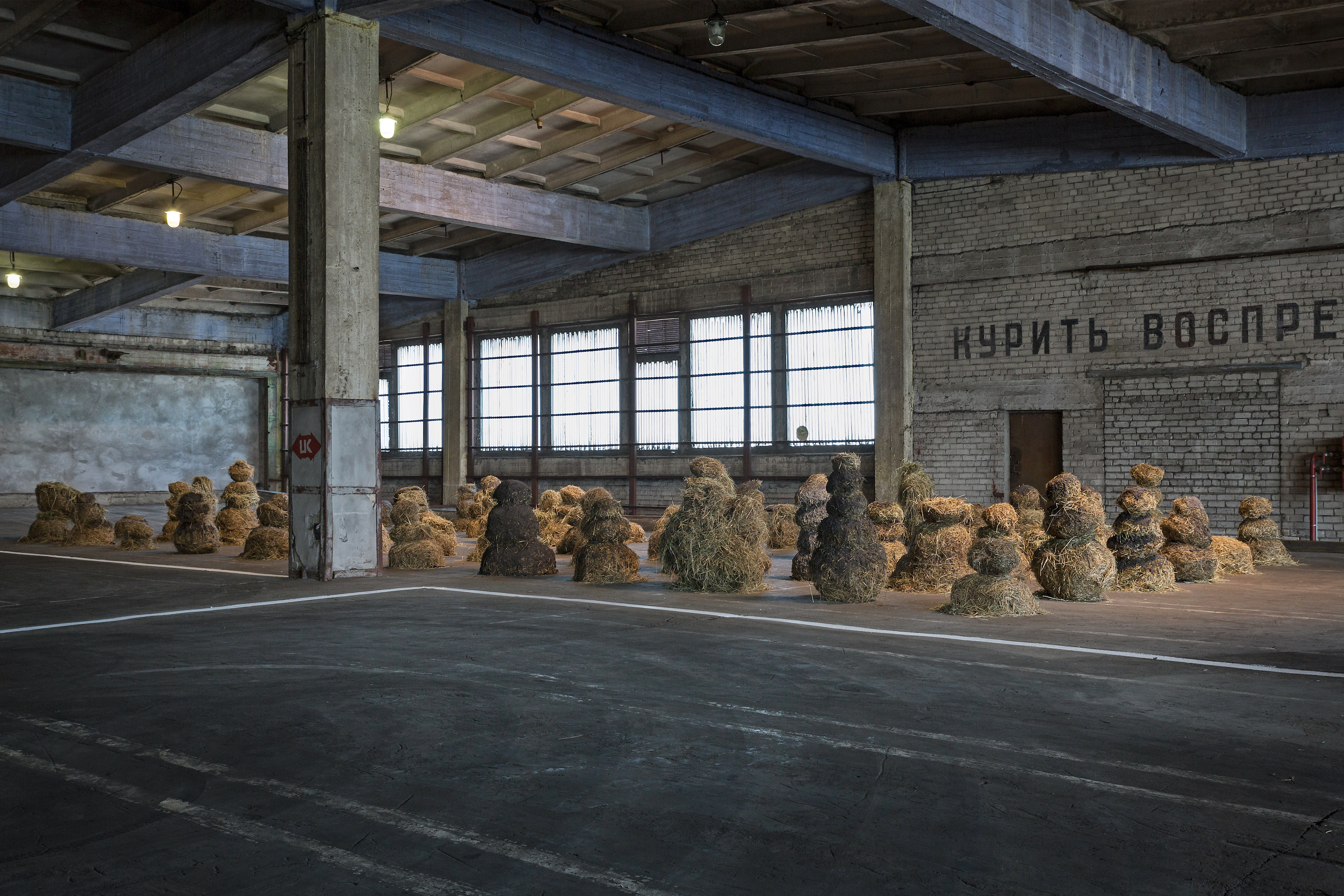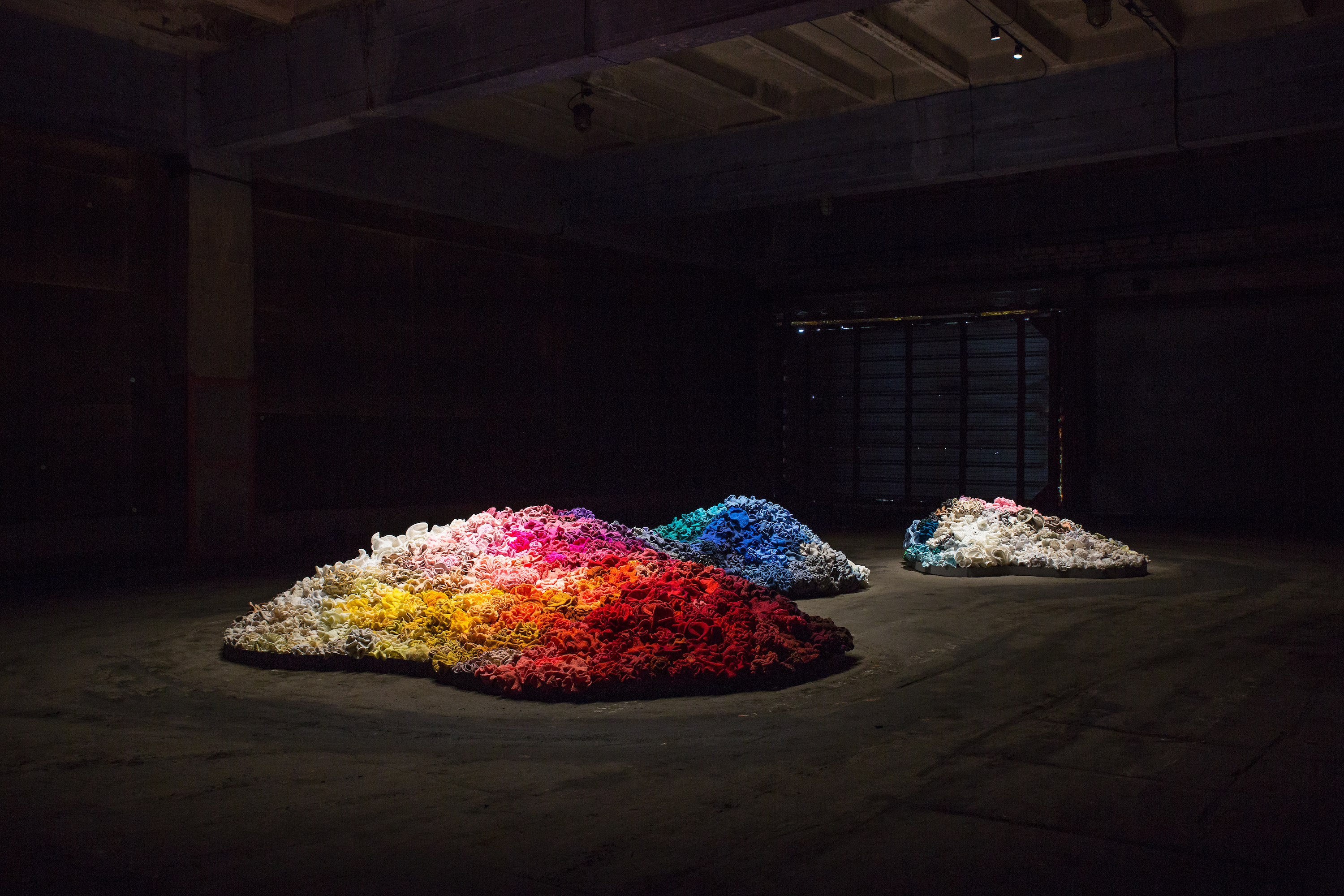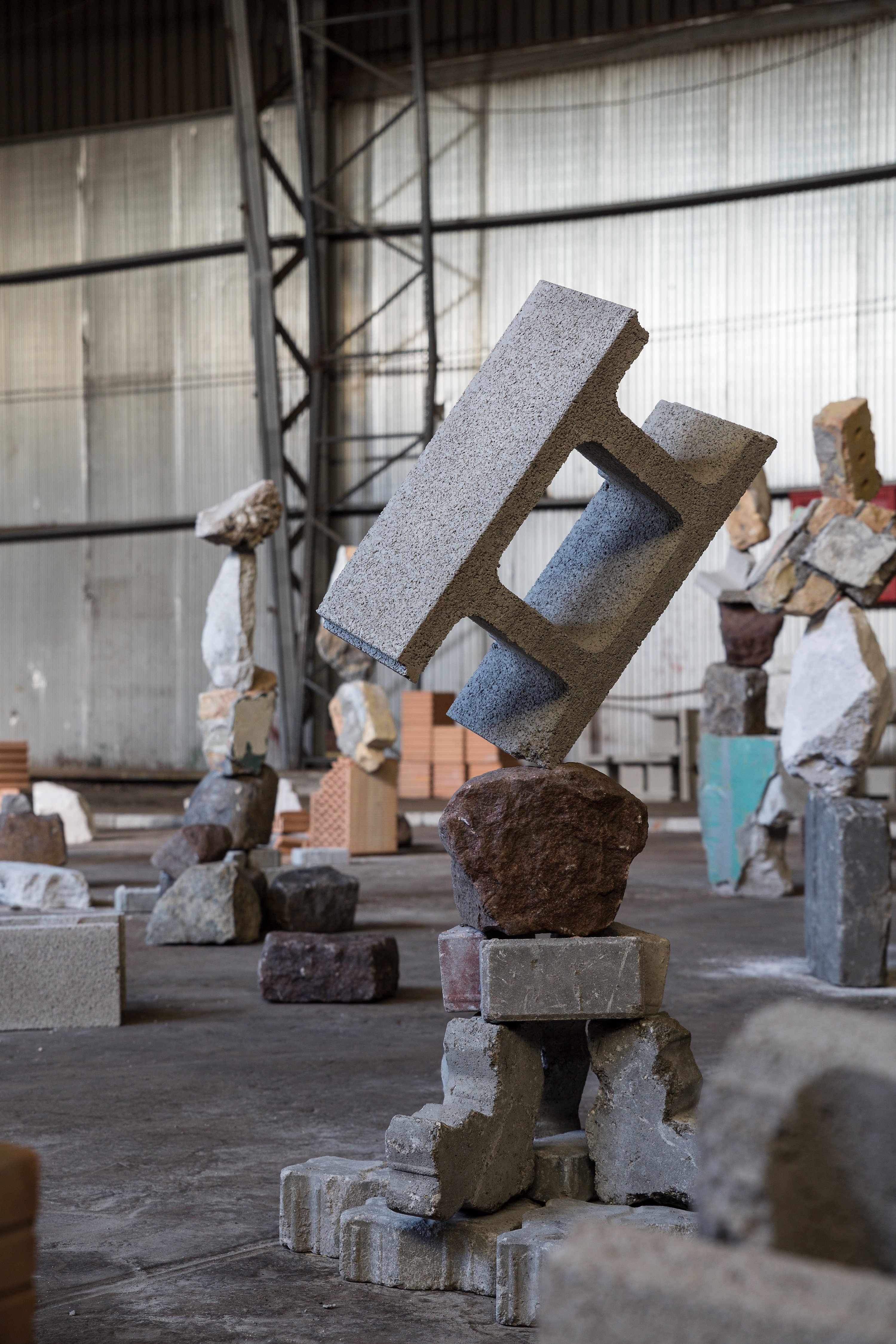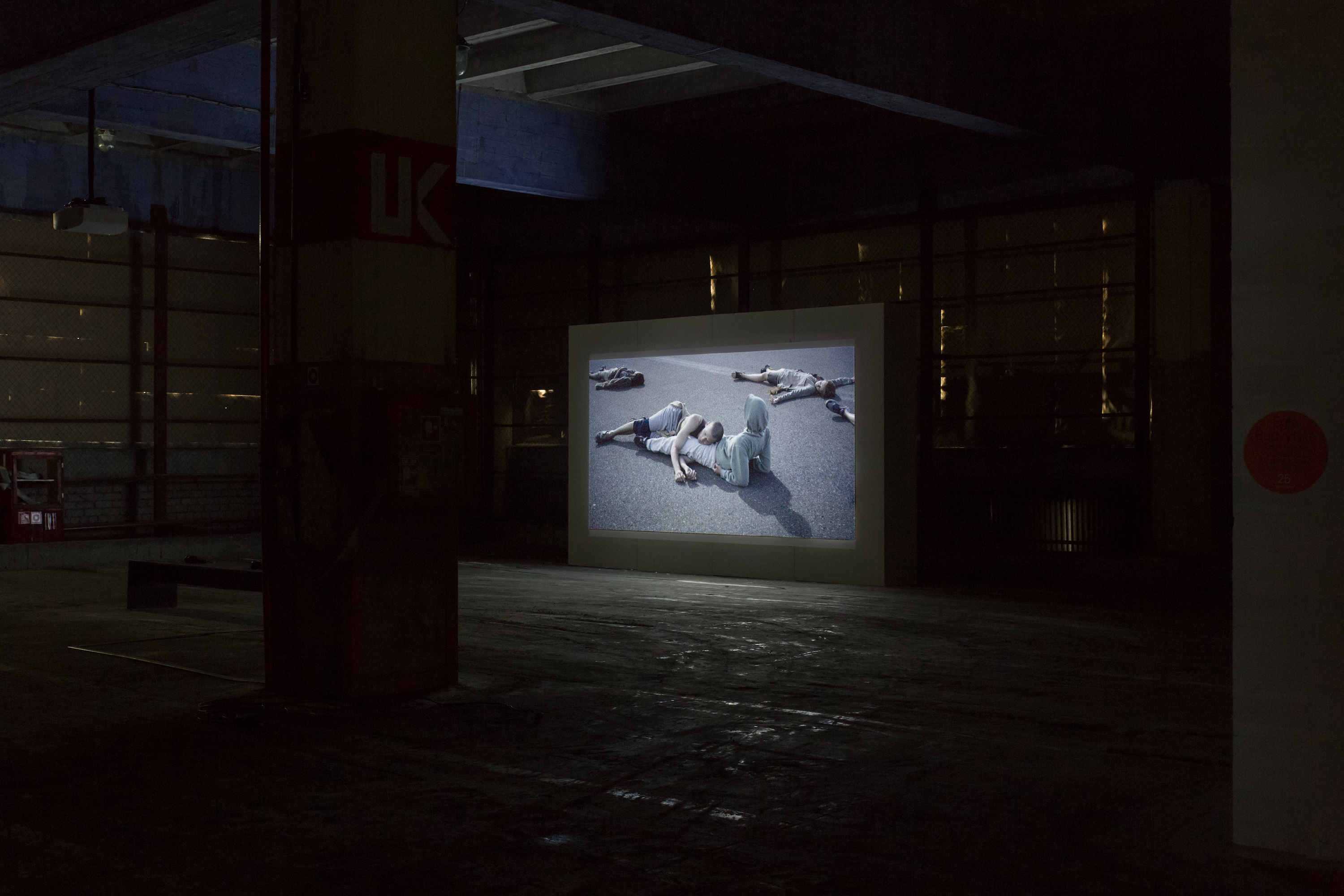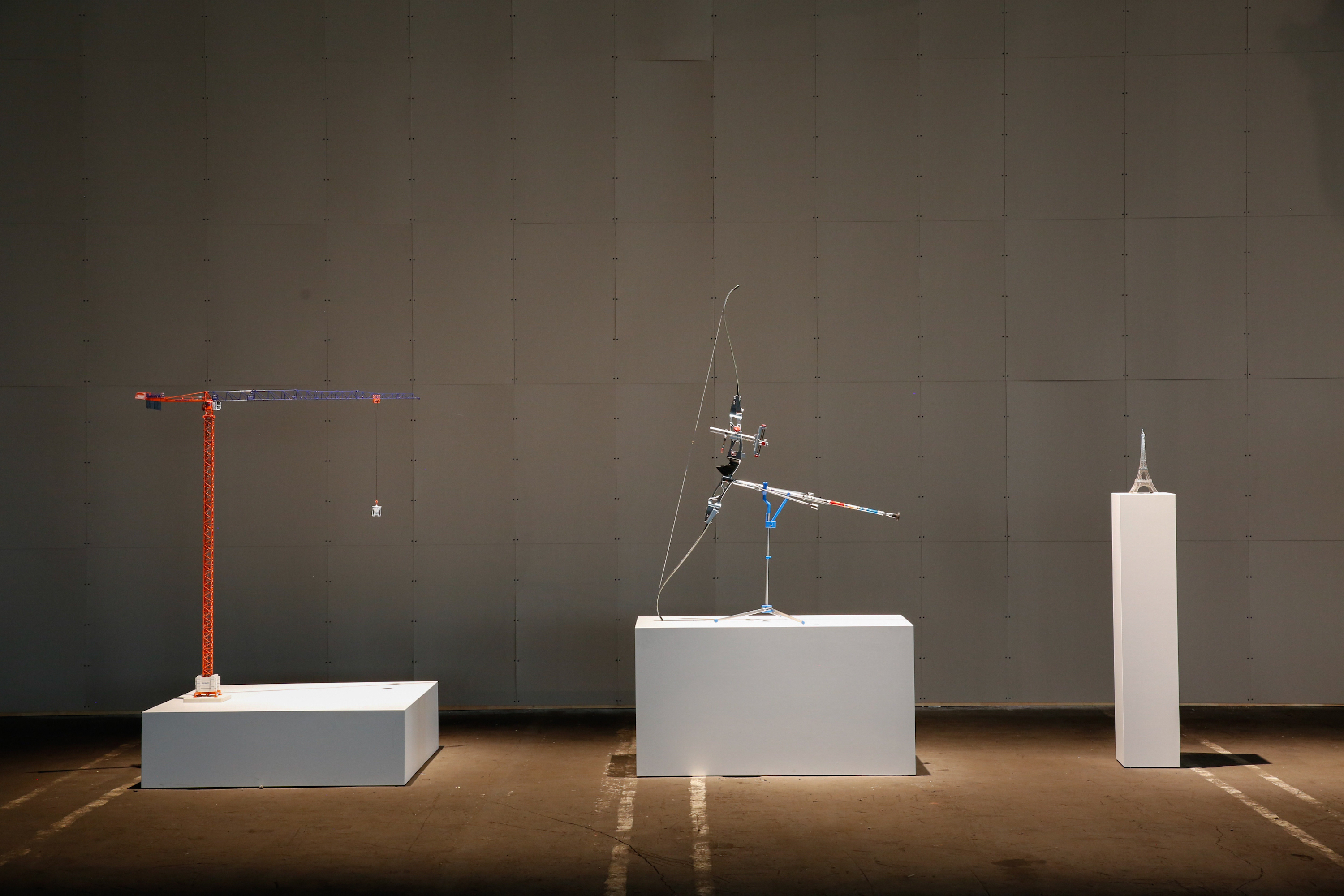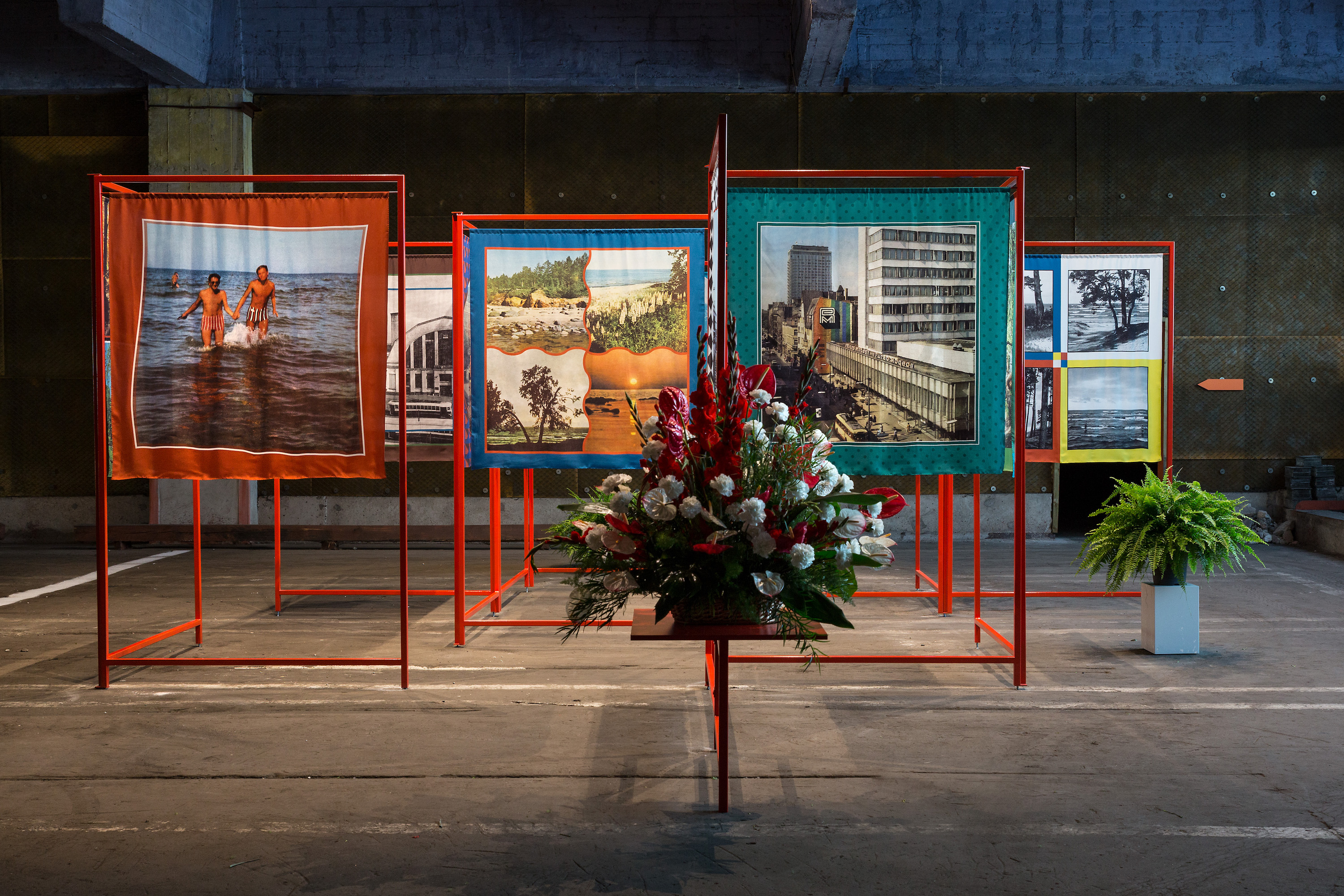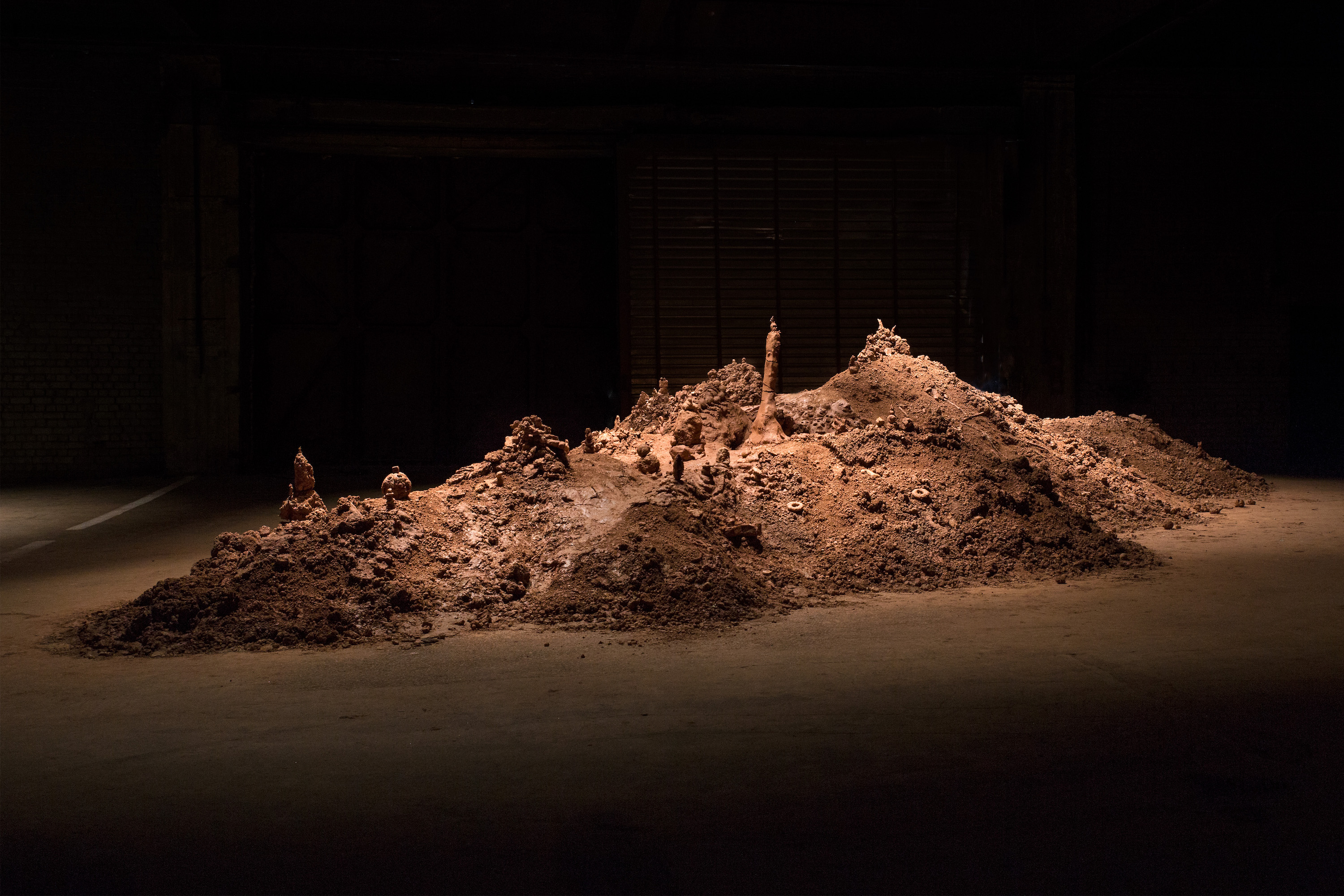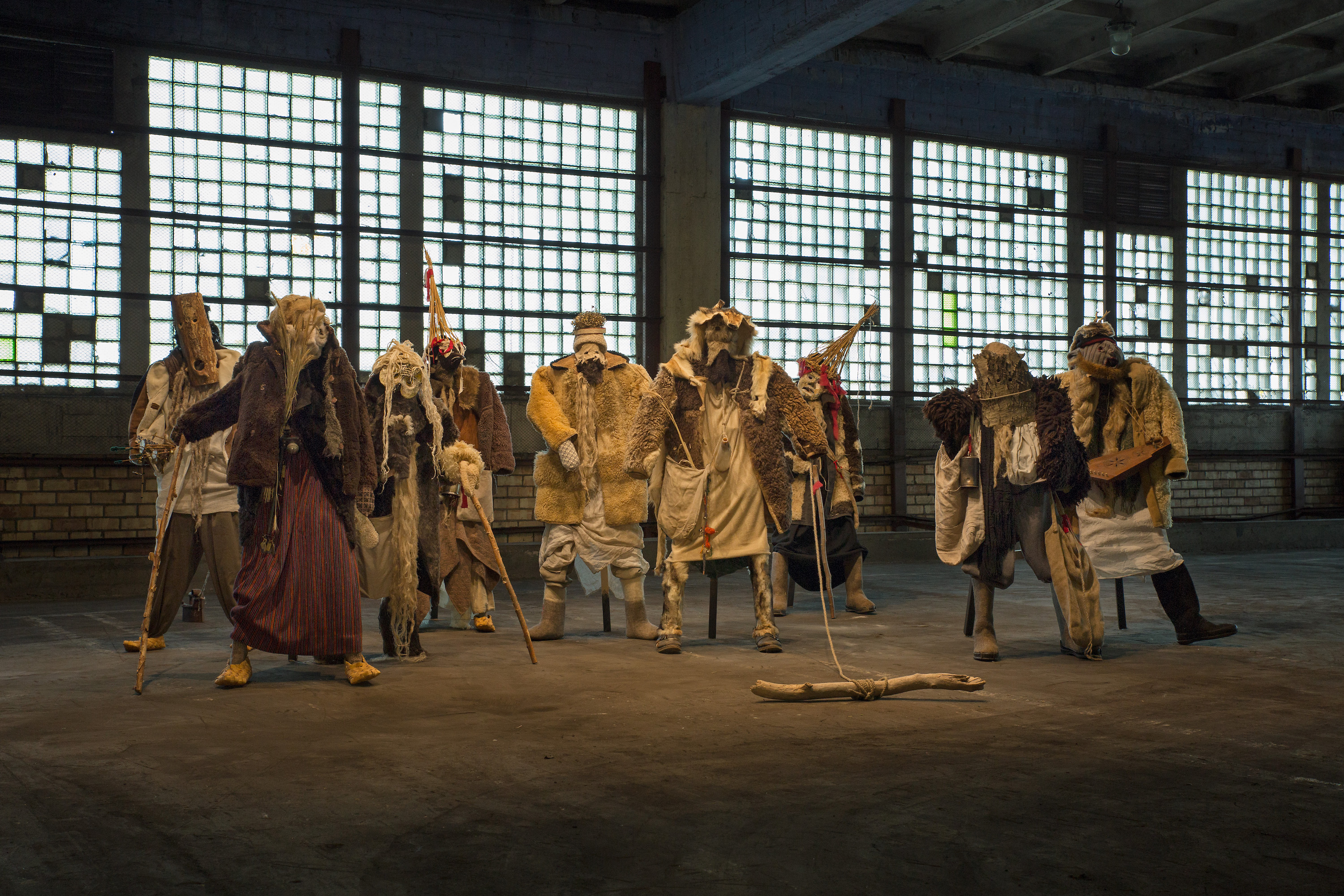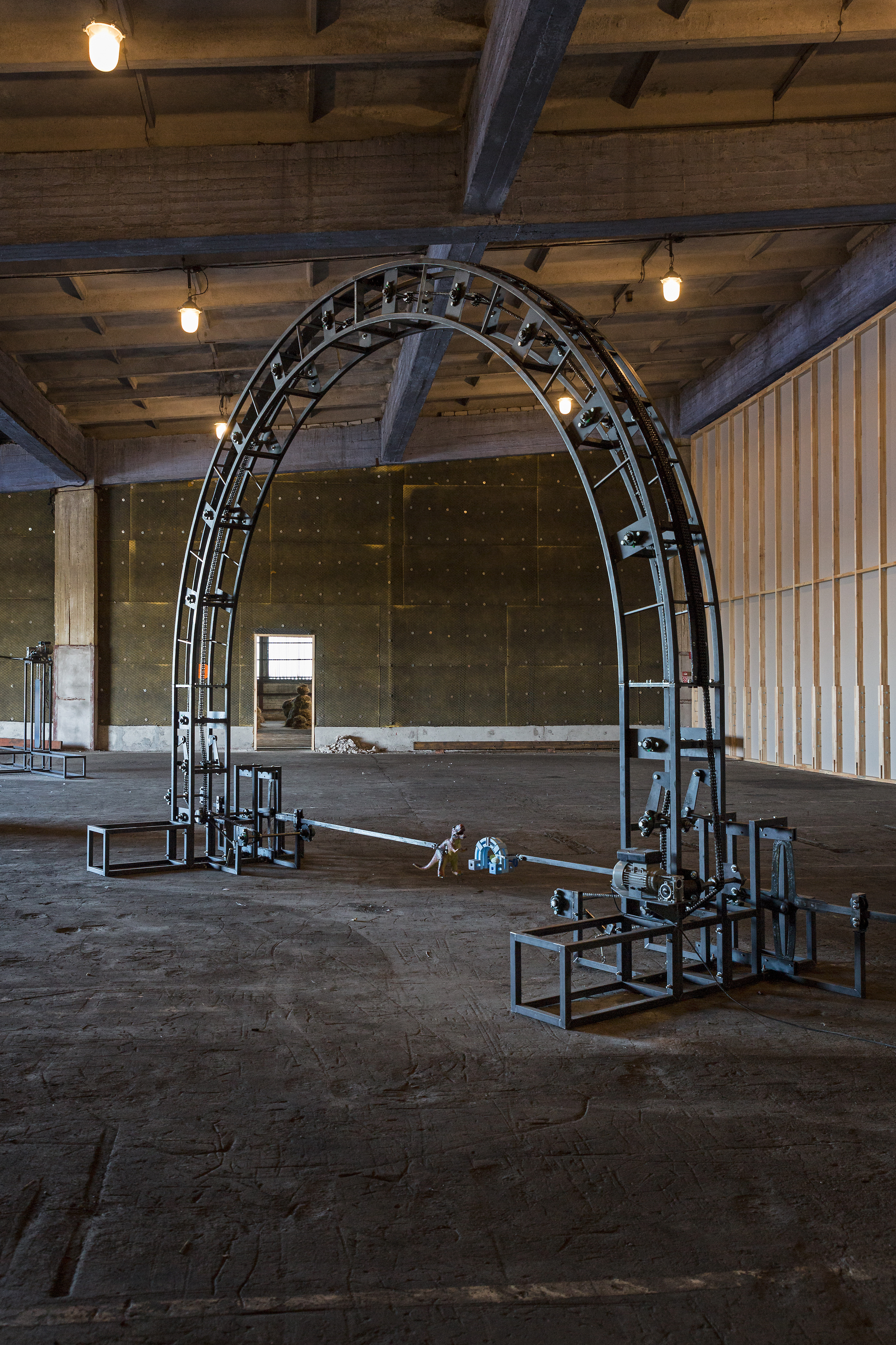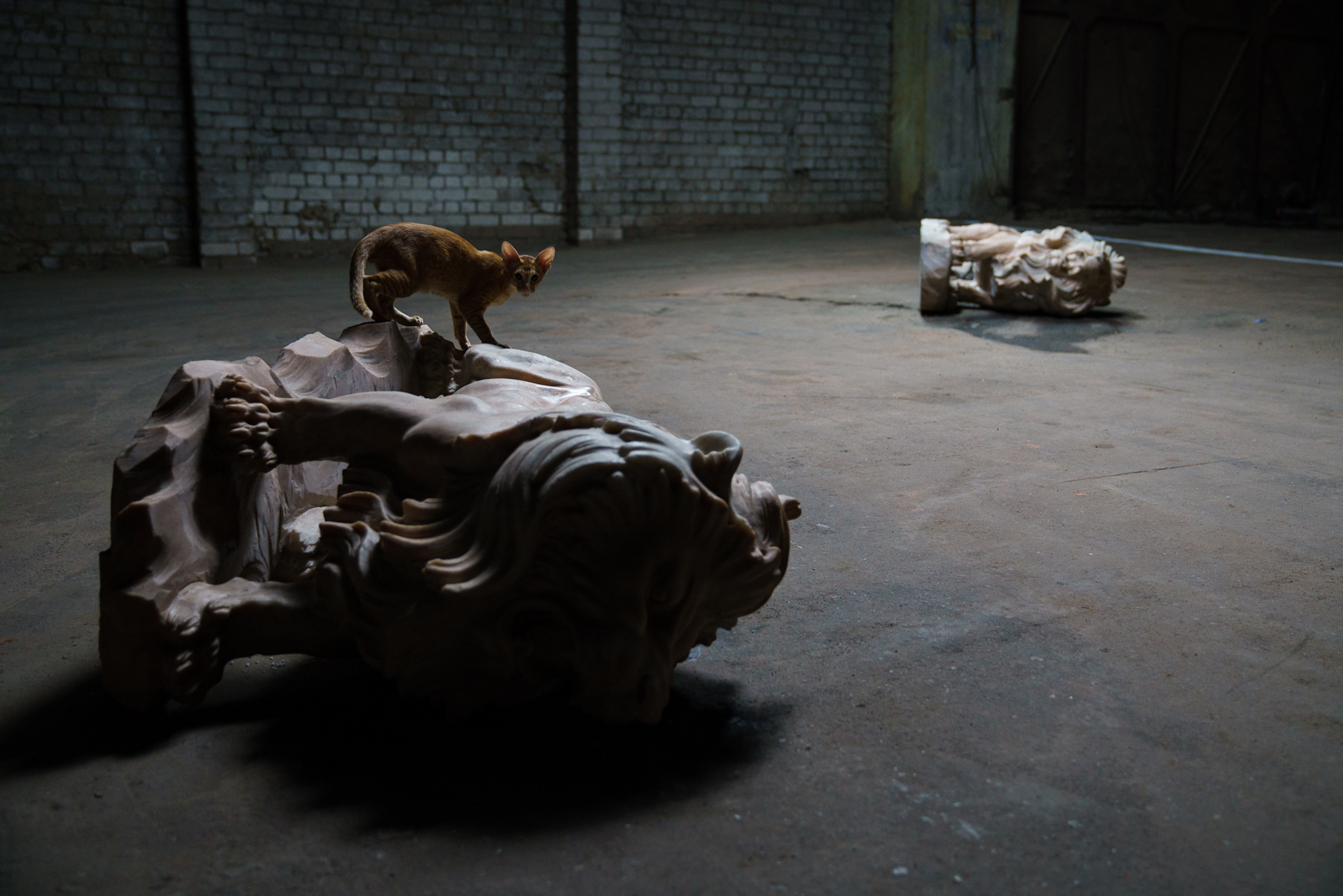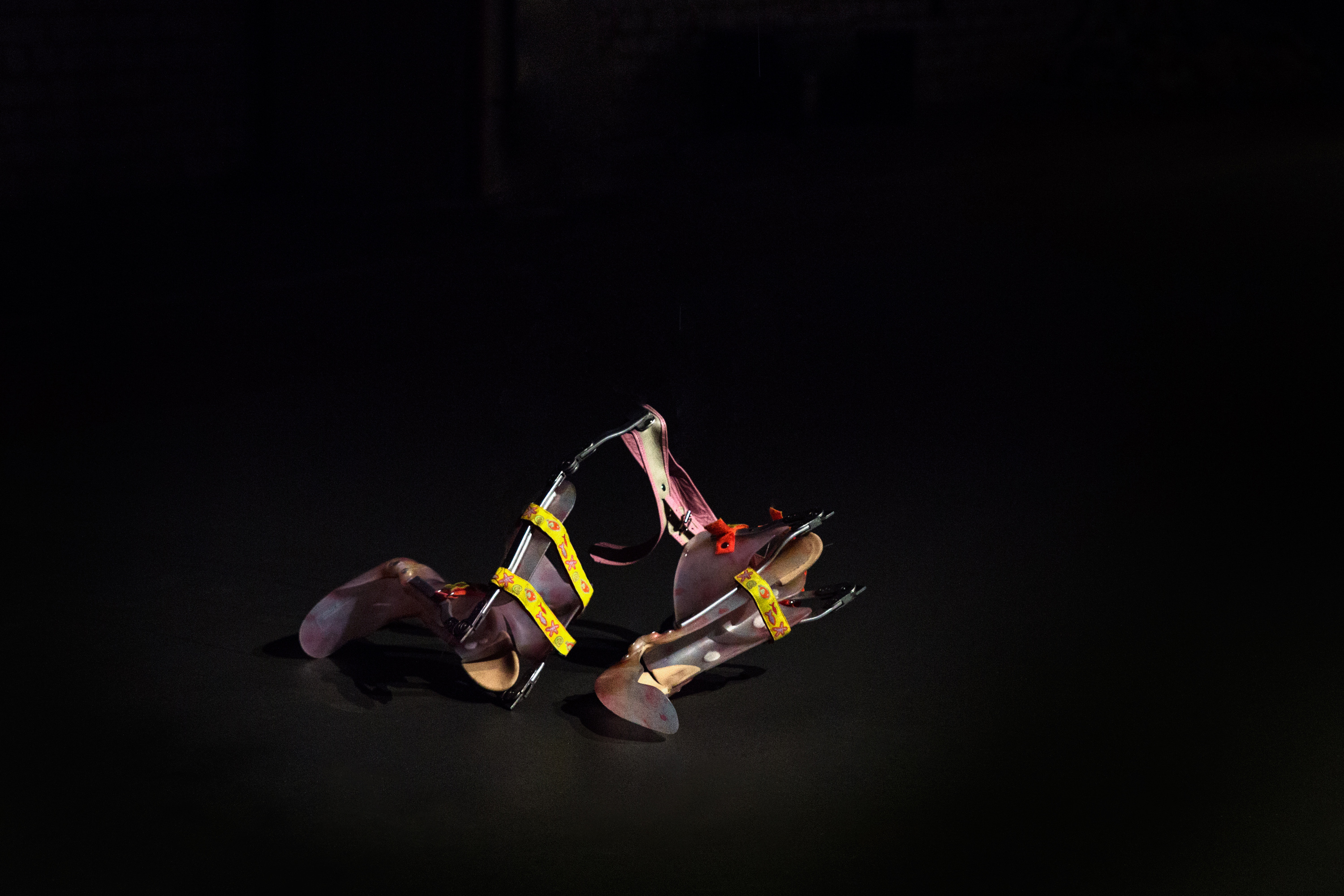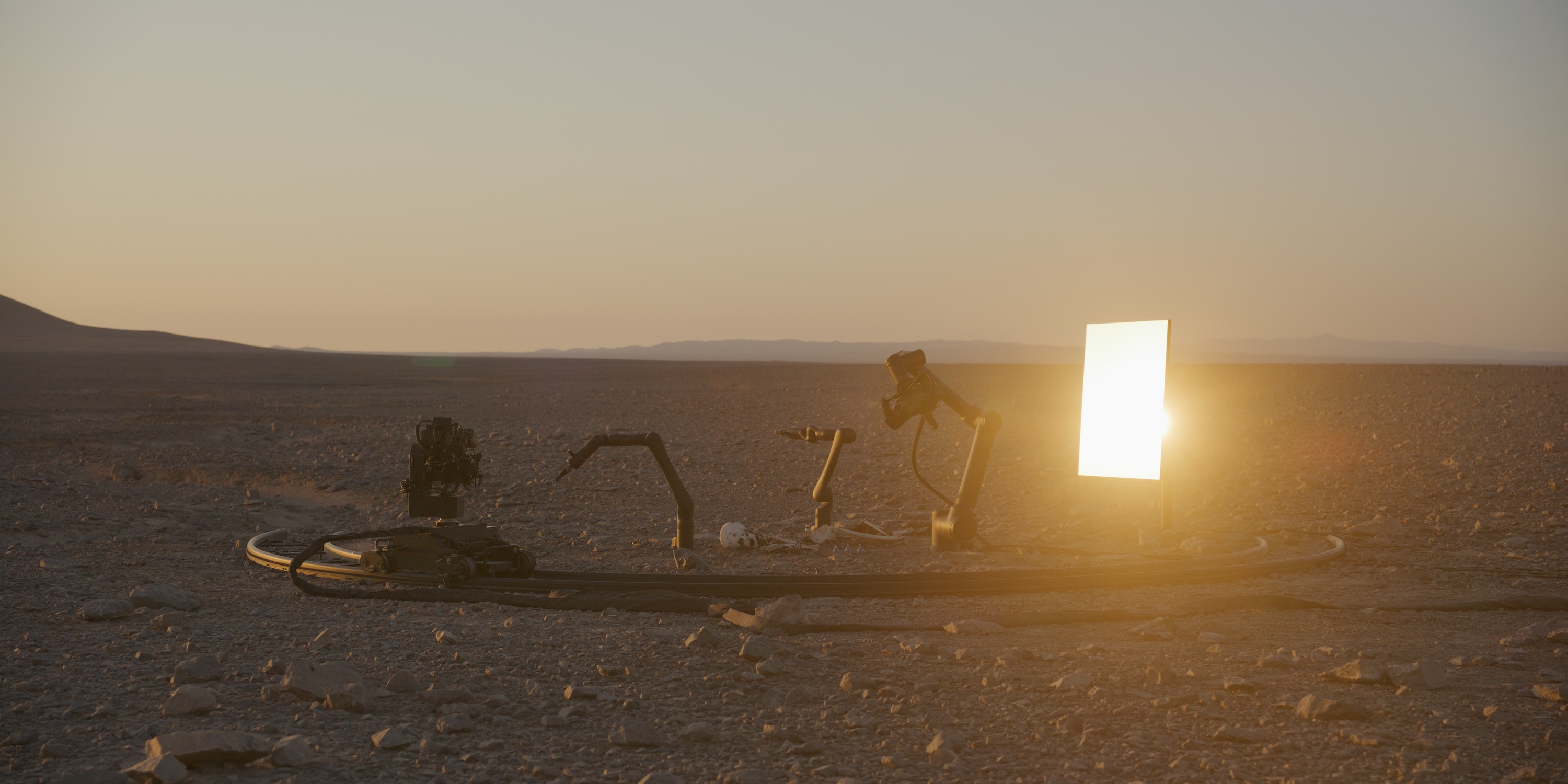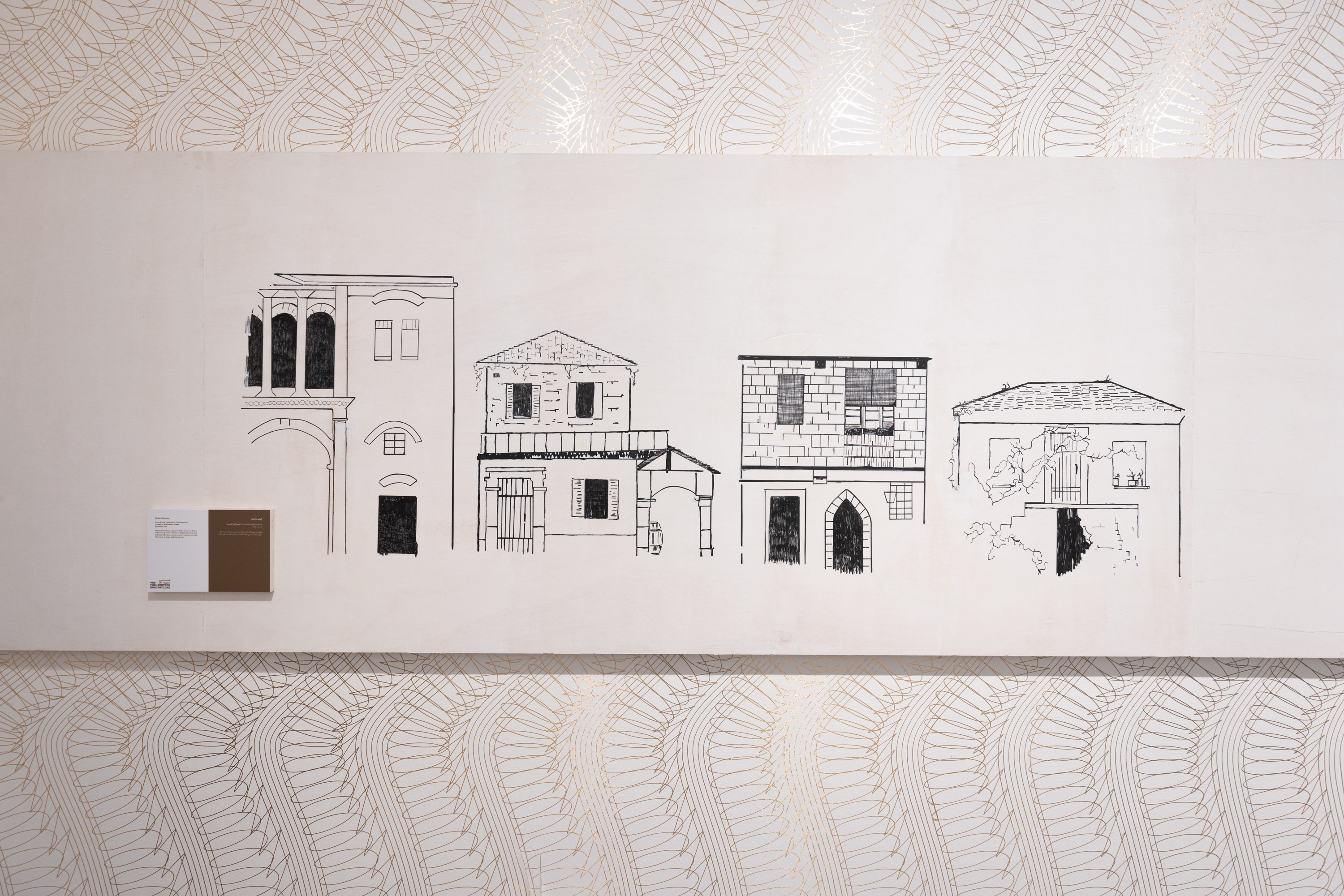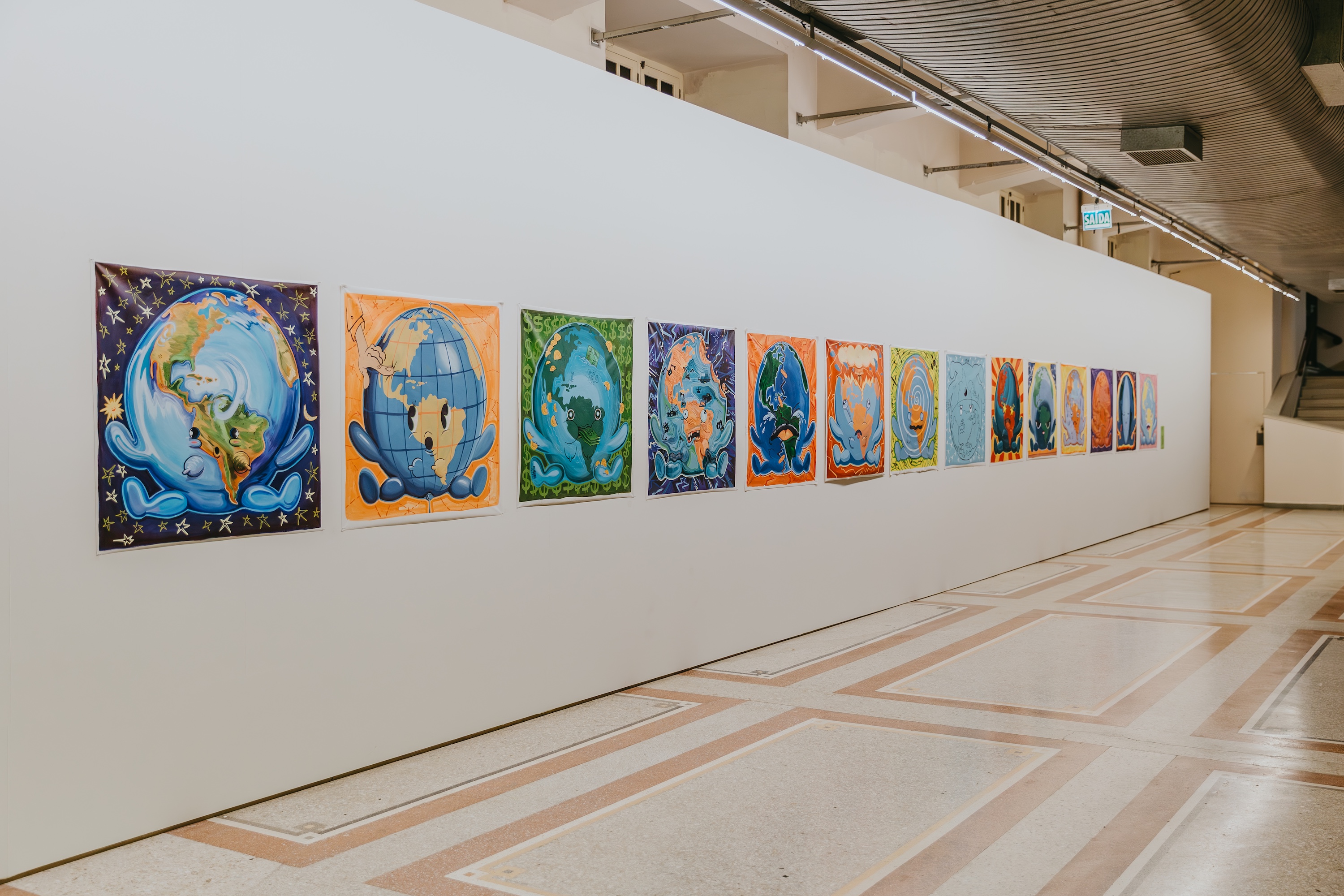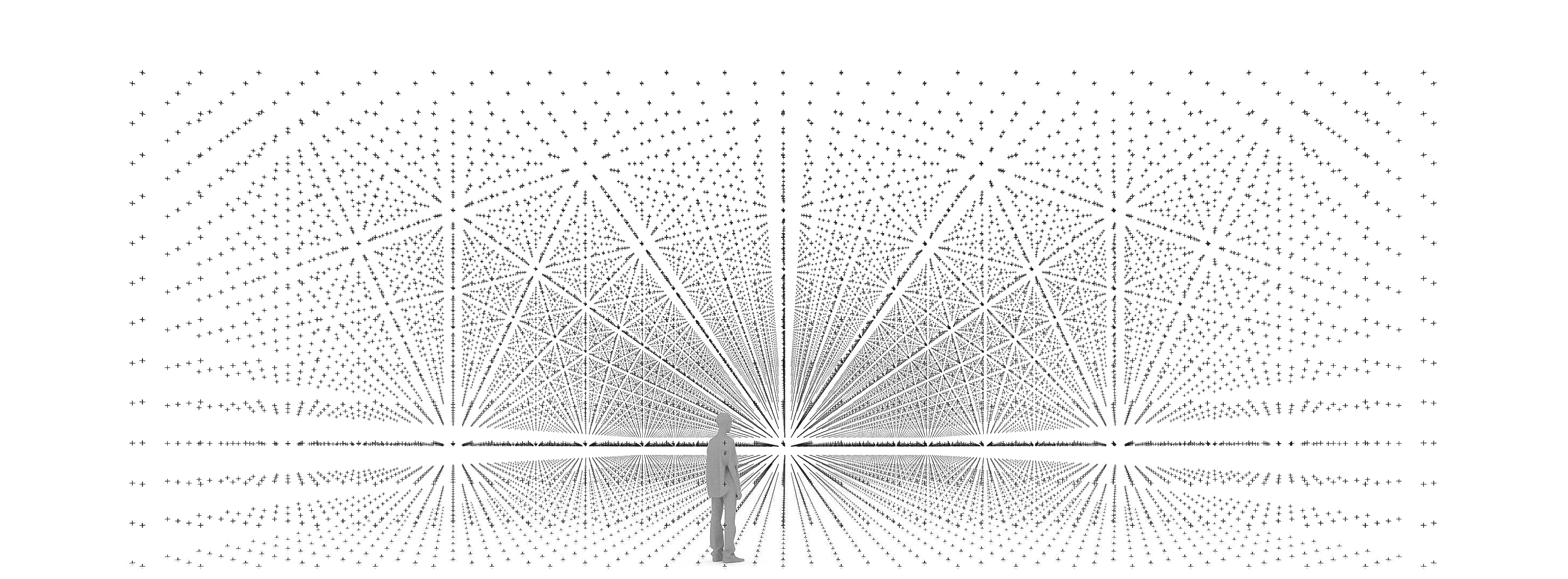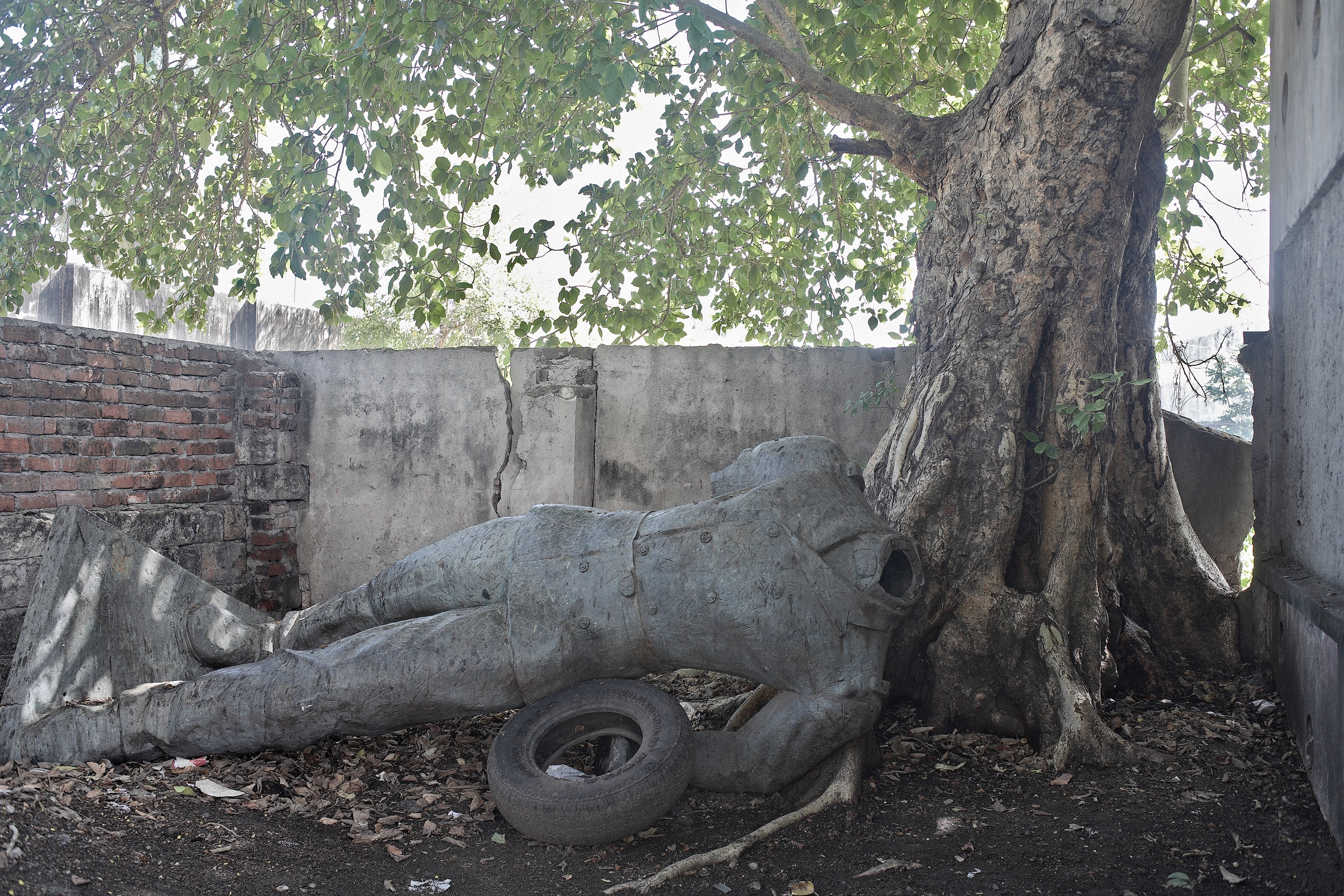August 20–September 13, 2020
If you can’t beat it, as the saying goes, incorporate it into your curatorial concept. After initially postponing the second edition of the Riga International Biennial of Contemporary Art (RIBOCA), the curatorial team led by Rebecca Lamarche-Vadel elected to embrace Covid-19, acknowledging the virus as a “significant author” of the exhibition. Change is the only constant and every end—for the curators, if not for the artists who weren’t able to show their works as initially intended—a potential beginning.
Taking place in the partially derelict port district of Andrejsala, the biennial is haunted by the specters of missing work due to shipping problems brought on by the crisis. Marguerite Humeau’s sculpture of a dying whale The Dead (A drifting, dying marine mammal) (2019), unable to be transported across borders, is represented by a guide narrating the audience through what should be there and a sound recording in an empty space. Elsewhere, such absences are felt in the crossed-out or differently colored sentences attesting to abandoned or amended plans that pepper the catalogue, and the starkly painted lines on the floor of the port building indicating the walls on which art would have been displayed. In juxtaposing absence and presence, “and suddenly it all blossoms” asks us to consider how exercises in speculation might prepare us for a future we can’t predict. And it’s true that, when every day brings more surreal and nightmarish news, Tomas Saraceno’s suggestion in Arachnomancy (2020–ongoing)—a multifaceted project encountered first through a quartet of posters showing oracle cards and a QR code which takes you to an app that tells your fortune—that we use spiderwebs to read the future no longer seems so absurd.
Oliver Beer expresses absent and nonhuman perspectives in Simply Rights/Unattained Goals (2020), a “concert” of resonant sounds from diverse objects sitting atop plinths of varying sizes arranged in four clusters (three of these are empty) in one of the building’s larger spaces. The work has also been adapted to pandemic conditions, with the objects—a metal tub, a lamp, a basin, pots, urns, a model home, an apparent ode to domesticity still reverberating with echoes of daily use—taken from the collection of a Riga local, and not from the women in Beer’s family as was originally intended. The unplugged microphones hovering over the pots, which normally amplify the sounds that rattle around them like the sea in a shell, are here purely symbolic.
The meaning nonetheless rings through: everything, whether animate or inanimate, has a voice. Erika Eiffel makes little distinction between these two states of being, practicing an intimacy with objects that is typically reserved for human relationships. An objectophile, she here displays the miniature replicas she makes of her non-living lovers: the Eiffel Tower (which she married in 2007, and from which she takes her name), a crane, and an archer’s bow, as well as photographs of the object-partners whose forms couldn’t be accommodated for the biennial. Eiffel’s love for these objects contrasts with wider attitudes towards the material world. Again, an extreme example is used to illustrate a simple but urgent point: by learning different forms of care, we might slow the pace at which we are destroying the world.
Also at the Port Building, Berenice Olmedo’s kinetic sculptures, built out of children’s prosthetics, are brought painstakingly to life. Named for the children they belonged to—Olga (2018), Janis (2019), Margot, and Pénélope (both 2020)—these motorized cyborgs move across the space in a heart-breaking choreography of stutters and falls and, like Eiffel’s object’s, begin to take apart an anthropocentric value system. Installations by Katrin Hornek, Kristaps Ancans, and Nina Beier pick up themes of childhood, transition, and pregnancy, collectively advancing the idea that the project of worldbuilding needs to include the marginalized: the teens in Hornek’s A Landmass To Come (2020), who leave their marks on a great mound of clay as they meditate to a tale about the earth; the women who pour milk, lapped up later by feral cats, onto the lion sculptures of Beier’s Total Loss (2020).
A few works eschew the more directly affective mode and anchor themselves in the local and historical context of Riga. Lina Lapelytė and Mantas Petraitis’s Currents (2020) comprises a log raft floating on the water surrounding a walkway that leads to a megaphone playing a looped recording of traditional Latvian poems and songs. The installation evokes a past in which the Baltic regions exported timber to the rest of Europe, reflecting on its relationship to the rest of the world as mediated through trade, as well as assessing the impact on the natural environment of the movement of goods and people. The surrounding ruins of Andrejsala’s once flourishing port imbue these works with a sense of lost hopes and deferred dreams, but also with the glint of possible futures.
It was in this spirit of creating new futures out of the materials to hand that the curators sought to adapt to the disruption caused by Covid-19, and to expand the scope of the exhibition. An online program of talks with artists, curators, and thinkers has been complemented by tours and performances that can be viewed on the website, while a collaboration with a handful of local restaurants allowed restaurateurs to imagine how the biennial’s concepts and subjects could manifest in a context outside of, or adjacent to, the art world.1
Yet this sleight-of-hand also raises questions about the relationship between the systematizing impulses of the curators and the independence of the artists they are supporting. A feature film with a still-vague synopsis that uses the biennial as set and its visitors as actors, scripted by Lamarche-Vadel and codirected with Latvian director Dāvis Sīmanis, will be premiered after the show closes. It is framed as a collaborative project, with numerous co-producers and actors, but it remains to be seen how it is possible to transform a biennial into a “film set” without reducing the artworks within to the status of bit-part actors or scenery. If the biennial presents a fantasy of existing as an enchanted bubble, a space outside the world, this rare insight into the conditions of its production only reinforces the reality in which a show of this magnitude is embedded: one which depends on private funding, and which risks leaving artworks themselves—complicated, disruptive—secondary to an overarching curatorial vision. The present crisis might bring into focus that the recognition of our shared predicaments results in a better future for all, but it also raises questions about what it means to collaborate, and who gets to decide on how such a collaboration is effected.
